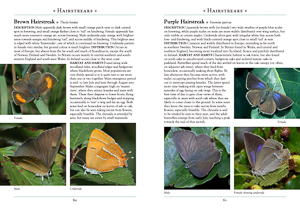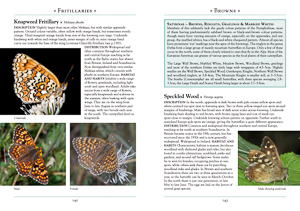 |
From the publisher: This easy-to-use, fully comprehensive identification guide to the 159 butterflies found in Britain, Ireland, Scandinavia, Belgium, Netherlands and the Baltics is perfect for amateur naturalists. High-quality photographs are accompanied by detailed species descriptions, which include common and scientific name, wingspan, distribution and habitat. The user-friendly introduction covers living with butterflies, anatomy, behaviour, enemies and friends, ecology, distribution and conservation.
The author, Ted Benton, is professor emeritus in Sociology at the University of Essex, UK. His academic work has focused on integrating environmental issues into social scientific theory, and he is a long-time environmental activist. Since childhood he has been a field-naturalist, with a strong interest in insects. He has travelled throughout Europe over the past 35 years studying and photographing butterflies in their natural habitats. In addition to his academic publications he has authored or co-authored seven books on natural history, including two award-winning volumes in the New Naturalist series: Bumblebees (2006) and Grasshoppers and Crickets (2012). His photographs of European butterflies have appeared in numerous publications, and he is author (with artist Tim Bernhard) of The Easy Butterfly Guide (Aurum 2006).
This is the most recent Lepidoptera-related book from John Beaufoy publishing, following in the footsteps of A Naturalist's Guide to the Butterflies of Peninsular Malaysia, Singapore and Thailand (reviewed here) and A Naturalist's Guide to the Butterflies of India (reviewed here). This series of pocket-sized books are necessarily small in size, but I am constantly amazed at how much information the publishers manage to pack into such a small amount of space. This book, standing at 176 pages, contains the obligatory introductory sections on topics such as butterfly anatomy, life cycles, behaviour, enemies (and "friends"), ecology and conservation, but the majority of the book is reserved (as it should be) for the species accounts.
 |  |
The most obvious question I had when reviewing this book is: "what countries, specifically, does this book cover?". The opening paragraphs make this quite clear - "Britain, Ireland, Belgium, Luxembourg, the Netherlands, Denmark, Norway, Sweden, Finland, Estonia, Lithuania and Latvia. The book also includes almost all species that are likely to be seen in northern France, Germany and Poland, and the great majority of those to be found in Europe to the north of the Alps". My conclusion is that, while this book does not cover all European species, it will appeal to anyone visiting our nearest neighbouring countries and also appeal to those that travel further afield to a large extent. I also suspect that (from my parochial perspective as a resident of Great Britain and Ireland!) the book includes any species likely to reach our shores. My test was to see if the relatively-recent influx of Scarce Tortoiseshell in 2014 warrants this species' inclusion and, indeed, it does.
 |  |
The species are organised by both family and subfamily, with nice succinct descriptions of each. Each species description has appropriately-representative (and high quality) images of the adult butterflies, as well as necessarily-brief summaries of the species, its distribution, and its habitats and habit. I would personally have liked to have seen a map (rather than text) of each species distribution, but this is just being picky.
 |  |
All in all, I'd characterise this book as "small, but perfectly formed" as it really does pack a punch given its diminutive size. Anyone starting to dip their toes into the water of European butterfly-watching would do well to start with this book before considering more extensive (and larger) publications.
The book is available through all good book stores, including those that are online.